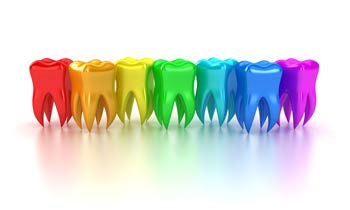General Dental Services

The team at (the office of PRACTICE OR DOCTOR NAME) offers a relaxing environment providing for your dental needs. Whether you need a cleaning or a crown we are here to take care of you. Dr. LASTNAME OR NAMES offers a wide range of dental services including cosmetic dentistry. If you would like to brighten your smile with whitening or have us help you obtain the smile you have always wanted, we are here to help. Some of the services we offer include:
In-Office Bleaching usually requires only one office visit. A protective gel or a rubber shield is placed over the gums to protect the soft tissue. A bleaching agent containing carbamide peroxide is applied to the teeth, and a laser light is then used to enhance the action of the whitening agent .
At-Home Bleaching requires an impression of the teeth to be taken to make a customized mouth guard to hold the whitening gel, containing carbamide peroxide, against the teeth. Once the mouth guard is made, it is worn for a period of time, generally from a couple of hours a day to every day during the night for up to four weeks or longer, if desired.
Complete (Full) Dentures are made after all the teeth in the mouth have been removed and the gum tissue has healed. The denture includes an acrylic base that is custom made in the dental laboratory and are made to look like natural gums, which sits over the gums or can be anchored to dental implants.
Partial Dentures are made only when a few teeth need to be replaced. The partial denture either attaches to crowns on either side of the denture or to a metal framework that is attached to the teeth on both sides of the partial denture. Partial dentures can be removable or they can be anchored in place by attaching them to dental implants.
Other benefits of laser dentistry over traditional methods can include:
- Reduced heat and vibration
- Little or no need for anesthetic
- Faster treatment time
- Increased rate of retention
- Less post-operative complications
Some of the dental treatment provided by lasers are as followed:
- “Cure” or harden fillings
- Whiten teeth
- Reshape gum tissue
- Biopsy or remove soft tissue lesions and ulcers
- Remove areas of tooth decay
- Eliminate pockets of infected gum tissue
- Root canal therapy Correct ankyloglossia (tongue-tied)
- Oral surgery and extractions
When restoring damaged, broken, and decayed teeth, the goal is to return the tooth to its original strength, function, and esthetics. Biomimetic dentistry accomplishes all of this in a conservative, strong, and attractive approach.
